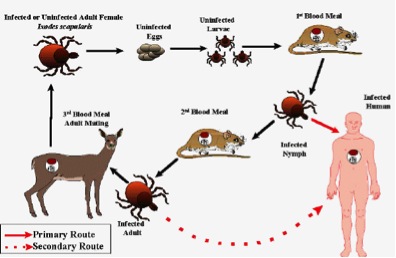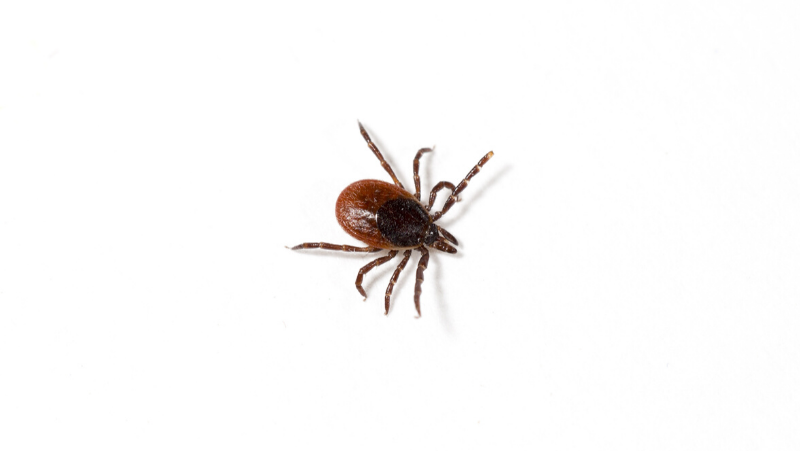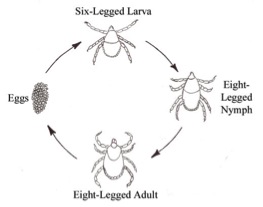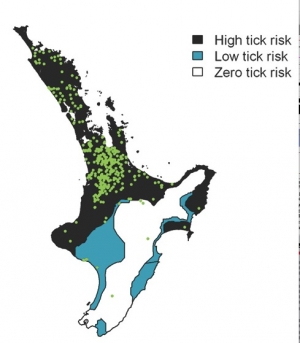tick life cycle nz
They drop off moult to become adults. If you have poorly-drained pasture your animals are more at risk from picking up ticks as this is a good habitat for them.
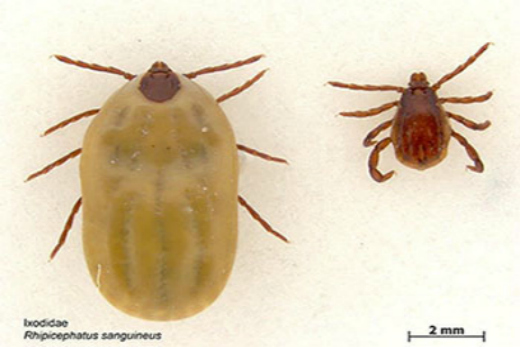
Sunlive Brown Dog Ticks Found In Nz The Bay S News First
Lets review the life-cycle of a tick.
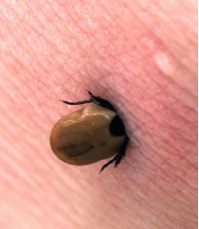
. In general the life cycle of a hard tick is as follows. Adult ticks lay up to 2000 eggs on the ground in summer. The female tick then leaves the host and.
In veterinary terms the disease is called oriental theilerisosis. Ticks can survive the winter hiding under snow leaf litter and brush. Life cycle There are four stages in the tick life cycle which usually takes a year to complete.
The life cycle of ticks Eggs. This is the safest way to handle your outdoor clothing as ticks can survive a full cycle in the washing machine. Egg six-legged larva eight-legged nymph and adult.
Ticks generally thrive in warmer moist environments but struggle to survive if. They move on and off hosts three times during their life cycle and each time they engorge on blood. Now let us look at their life cycle to get a better understanding.
1 The Egg Stage 1 After the adult female tick has acquired a proper blood meal she mates with the adult male tick leaves the host and searches for a suitable spot to lay her eggs. The life cycle of a tick is completed after four stages namely egg larva nymph and adult it requires more than a year to complete a full life cycle. Tick season has various peaks corresponding to the life-cycle but generally numbers are higher during the warmer months and they tend to over-winter in New Zealand when they are less active.
Stages in the Life Cycle of Ticks. The adult stage is when ticks breed and produce more eggs. On average tick eggs hatch after about 2 weeks though it can take as long as 6 weeks or as little.
The two headlands are spatially independent separated by ocean and urban development and parts of both headlands are classified as sydney. Ticks have backwardly pointing teeth Handle your clothing carefully When you come in place your clothing somewhere warm to dry out in a hot room or on a hot windowsill. After hatching from the eggs ticks must eat blood at.
It may be best to fence off those areas. The eggs hatch and six-legged larvae emerge from the eggs. Egg larva nymph and adult.
Life Cycle of Ticks. Eggs hatch to become larvae which moult to become nymphs then adults. This nymph can over-winter in quite cold temperatures.
How long does the life cycle of the New Zealand cattle tick take and how long do they spend feeding. A nymph seeks out and feeds on a second host drops off to the ground and moults to an adult. The First Stage egg The adult female tick first fulfills a proper blood meal then the process of mating occurs between an adult male and adult female tick.
Depending on the species ticks can live for up to three years during which they go through four distinct life stages. Ticks are not able to lay eggs directly on a host they must first detach. Egg larva nymph adult.
Ticks can live without a blood meal for over a year so leaving pasture un-grazed and hoping the ticks will die from lack of food isnt a very practical option. These are spherical slightly translucent dark brown in color and are laid in clusters of up to 3000 individuals. Black-legged ticks deer ticks typically become infected with the Lyme-causing bacteria Borrelia burgdorferi during their larval stage when they.
The cattle tick life cycle is an average of 21 days. Life history cycle larvae or seedgrass ticks are tiny 05mm and found mostly in autumn and winter. The larvae hatch in the winter and emerge.
Ticks that complete their life cycle in this manner are called two-host ticks like Hyalomma anatolicum excavatum. These eggs are the first of the four distinct life stages that make up the tick life cycle. In spring the nymphs now 2-3mm attach to another host and engorge again over three to five days expanding to about 5mm.
Worlds first independent life-cycle based sustainability certification system that applies globally. Invented by New Zealanders in 1998. In early spring ticks begin to lay their eggs.
1 hour agoTicks can have a very long life cycle with four stages egg larva nymph and adult. Its important to be familiar with this life cycle to get rid of ticks from your lawn and landscape and prevent tick bites. Ixodes scapularis the black-legged deer tick which is the primary vector for Lyme disease has a four-stage life cycle and a lifespan of about two years.
The early mid-summer than attach to a host again and engorge to about 10mm over three to five days. Once the egg hatches a tick needs a blood meal at each stage in order to survive and continue to grow. Ticks go through four life stages.
Hard ticks have only one nymphal stage unlike soft ticks. In New Zealand this tick is a carrier of Theileria which is often misdiagnosed as Anaplasma. Most ixodid ticks require three hosts and their lifecycles typically span three years.
This protozoan Theileria orientalis ikeda is the one currently causing problems and spreading south in New Zealand cattle. Most ticks go through four life stages. 1 year Each stage only feeds a few days a year meaning most of the life cycle is spent in the environment.
Green Tick Global - one certification ecolabel worldwide. The ticks will dry out and die within 24 hours. After hatching from the eggs ticks must eat blood at every stage to survive.
The female tick drops off its host often in the fall and lays thousands of eggs. Ticks that require this many hosts can take up to 3 years to complete their full life cycle and most will die because they dont find a host for their next feeding. Certified products sold in Australasia Asia.
Theileria is a protozoan which acts as a parasite spread by the saliva of ticks as they suck the hosts blood. LIFE CYCLE OF THE DEER TICK. Ticks begin their lives as eggs.
The life-cycle stages of Deer Ticks goes from Egg Larva Nymph Adult and at each stage there are ways to help better protect yourself from tick-borne illnesses. They need the dry to. This disease can cause reluctance to walk weakness abortion mucosal pallor and pyrexia.
A newly hatched six-legged larva feeds on a host drops off to the ground and moults to a nymph.

Flea Treatment In Nz And Ticks Too Pd Insurance Nz

Ticks Found On Canterbury Dogs Stuff Co Nz

Theileria Emerging Disease In Cattle Vet Centre

Red Mite Relief For Your Backyard Chooks With Franklin Vets

Farm Animal Care Cattle Theileria
